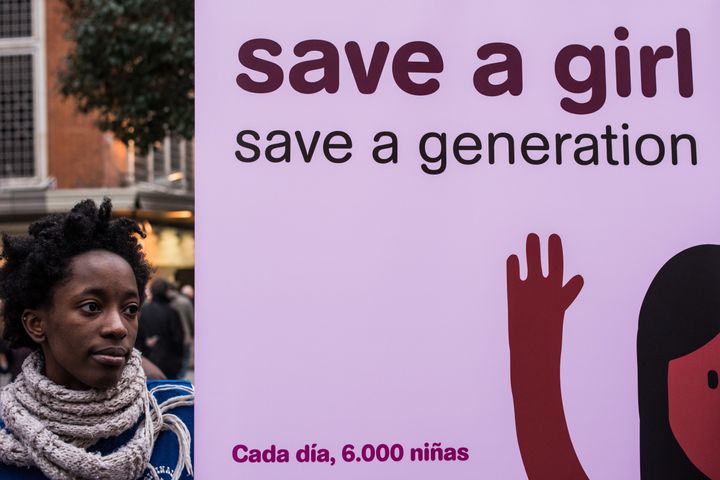
A recent UN report pegged the number of victims of female genital mutilation around the world at 200 million. But beneath that figure lies some progress: In nearly every country, the percentage of girls who have had the procedure has decreased.
What’s more, a majority of the population in all 30 countries surveyed ― both men and women ― think the practice, which is the partial or total removal of the external female genitalia ― should end.
Claudia Cappa, a lead author of the UNICEF report, told the Huffington Post that while each country has tackled FGM in its own way, a common theme among successful efforts is that they managed to reframe social mores around girls and women.
“Nearly every country that has reduced FGM has used initiatives to change the way communities see girls, marriageability and virginity,” she said.
The new report pegs the number of FGM victims at 70 million higher than the previous estimate from 2014. The main reason for the increase is that Indonesia is included for the first time ever; nearly 60 million girls and women in the country have undergone FGM, which has no medical purpose or religious significance. It’s a cultural practice in parts of Africa, the Middle East, and Indonesia used in part to ensure premarital virginity.
The report includes the following successes in reducing FGM:
- In Kenya, about 40 percent of women had the procedure in 1984, and now that number is less than 10 percent
- In Egypt, a very “high-prevalence” country in terms of FGM, the rate decreased from 97 percent to 70 percent in the same period. “While 70 percent is still quite high, such decreases are even more significant in countries where FGM is almost universal, because you have to contend with more entrenched social mores,” Cappa said.
- Similarly, Liberia has slashed its FGM rates from 72 percent in 1983 to 31percent in 2013.
In all the countries that have achieved major opinion shifts toward FGM, a mix of public figures, government actions and NGOs have contributed efforts.
The efforts of the First Lady of Burkina Faso Chantal Compaore, for example, helped the UN pass a major anti-FGM resolution and slash the country’s FGM rate by 31 percent. Cappa dubs such actions “macro-level” factors.
Legislation is another macro-level factor that helped the Gambia recently outlaw FGM, she pointed out.
“Legislation is very important because it sends a signal that the practice is no longer okay,” she said. But she also pointed out that laws must be linked to practical interventions to stop the demand within families and communities for FGM. And many experts have pointed out that laws simply aren’t enough since they aren’t always followed or enforced.
In the court of public opinion, there are even more successes in the fight against FGM. According to the report’s press release, more than 15,000 “communities and sub-districts” have publicly abandoned FGM, and five countries passed laws criminalizing it. And nearly two-thirds of boys and men in all countries disapprove of the practice.
Still, experts point out that the world’s population, particularly in countries where FGM is prevalent, continues to grow. And even if current decline in the practice is maintained, the actual number of girls and women will increase over the next decade, according to the UNICEF report.
“Although measures to end FGM are proving to be more successful, the growing population in countries with higher prevalence means that numbers have increased... we cannot rest or lose momentum until every single girl at risk is protected,” said Mary Wandis, an FGM Program Manager at Equality Now, in a press statement.
Still, it is significant that the perception of FGM has rapidly changed from a localized, Africa-specific issue to one of global concern, experts point out. “I am very hopeful that we can end FGM within our lifetime, and the data confirms that,” Cappa said. “Social change requires time, but the amount of momentum towards FGM in recent years is remarkable.”
Also on HuffPost:

